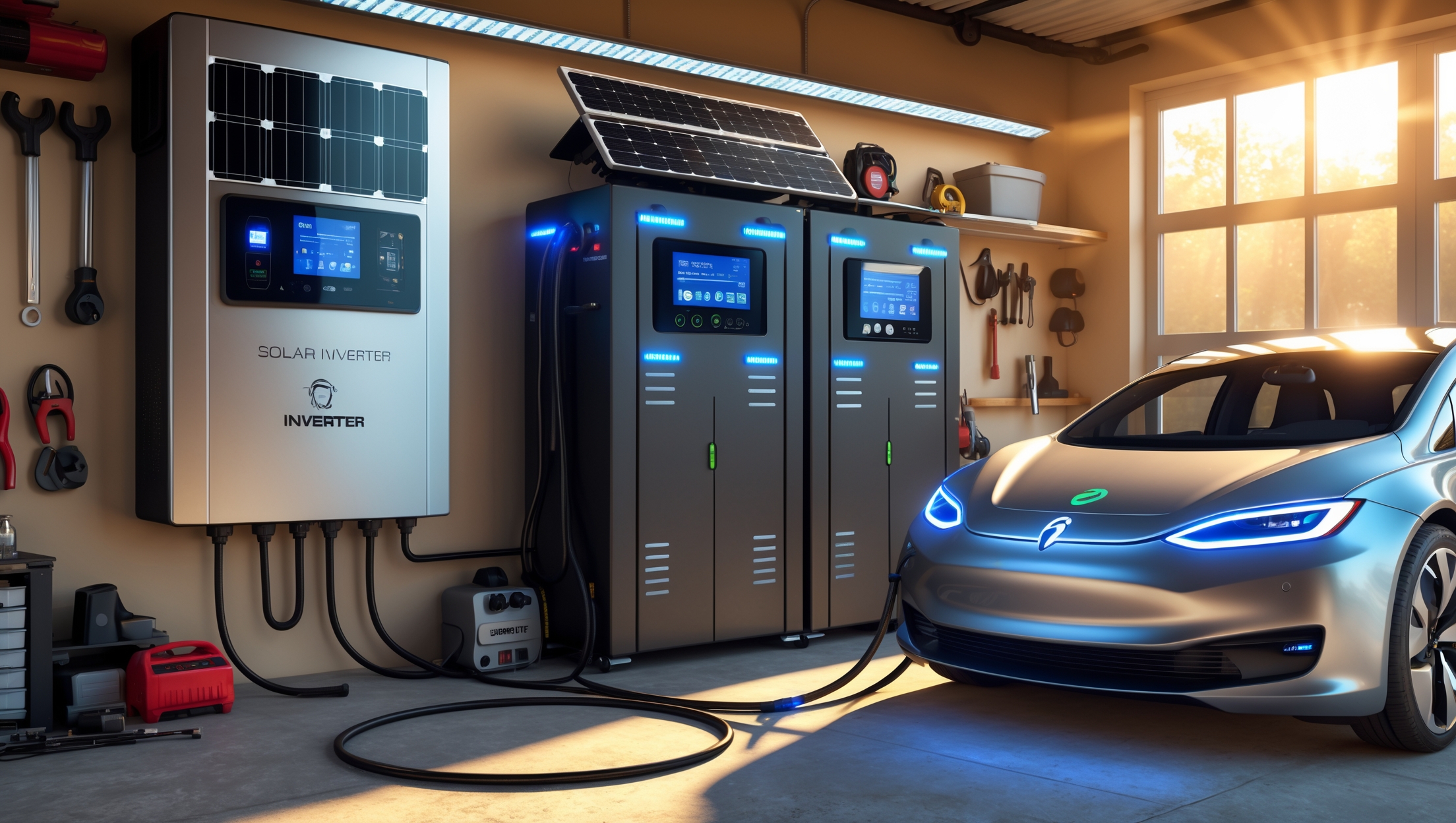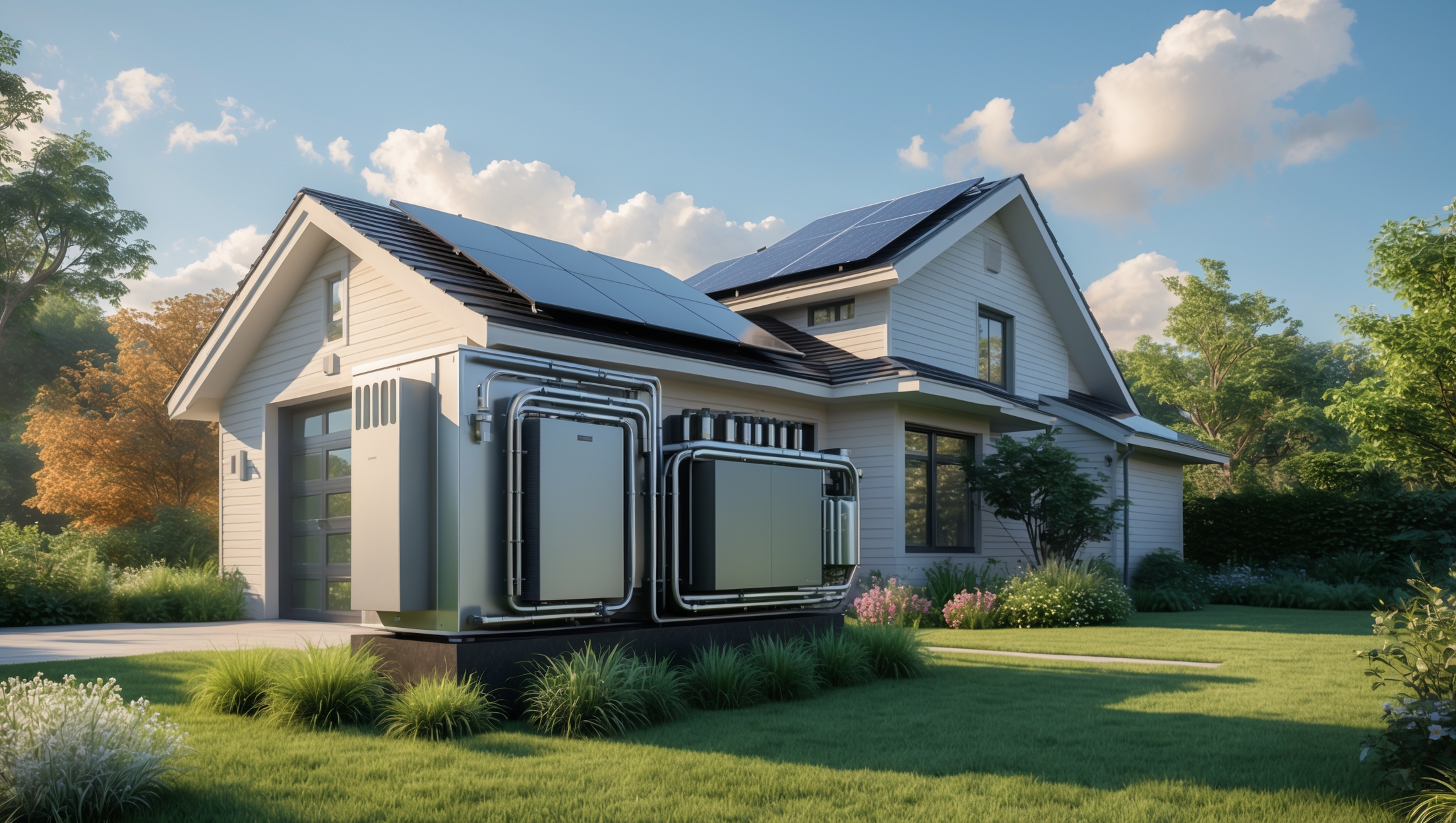Introduction: Why Insurance Matters for Home Solar Car Battery Backup Systems
Investing in a home solar car battery backup system is a practical step toward energy independence, resilience, and sustainability. As more homeowners adopt solar panels paired with battery storage to power electric vehicles (EVs), the need for robust protection against loss or damage is becoming increasingly clear. Whether you’re driven by the desire to lower your carbon footprint, hedge against grid outages, or simply recharge your EV with clean, self-generated energy, installing a solar car battery backup system is a significant investment. But what happens if severe weather strikes, a component fails, or an accident occurs in your garage? Without proper insurance coverage, you could face steep repair or replacement costs that threaten both your finances and your sustainable lifestyle goals.
This guide provides a comprehensive overview of insurance essentials specific to home solar car battery backup systems. We’ll explore the types of coverage you need, common coverage gaps, documentation best practices, how claims work, and tips for securing the right policy. By the end, you’ll be equipped to protect your renewable energy investment with confidence.
Understanding Home Solar Car Battery Backup Systems
What Is a Home Solar Car Battery Backup System?
A home solar car battery backup system typically consists of rooftop solar panels, a battery storage unit (often lithium-ion or similar), an inverter, and a charging station for your electric vehicle. These systems allow homeowners to store excess solar energy for nighttime use or during outages, and to charge their EVs even when the grid is down.
Why Are They Unique from Other Home Energy Systems?
- Size and Value: Battery backup systems for EV charging can be large and expensive compared to solar-only setups.
- Integration Complexity: Wiring, inverters, and EV chargers add layers of technical risk.
- Potential Hazards: High-voltage batteries and electrical components increase fire and damage risk.
- Dual Use: These systems often serve both household and transportation needs, raising unique liability issues.
Key Insurance Coverage Types and What They Protect
1. Homeowners Insurance—The First Line of Defense
Most standard homeowners insurance policies cover solar panels as part of your dwelling or as ‘other structures’ if installed on a garage or carport. However, coverage for battery backup systems and EV chargers is less uniform. Key considerations:
- Dwelling vs. Personal Property: Panels permanently attached to your roof are typically covered as part of the dwelling, but battery units and chargers may be considered personal property or even excluded unless declared.
- Named Perils: Coverage often applies only to specific risks, such as fire, theft, vandalism, windstorm, and hail.
- Exclusions: Floods, earthquakes, and power surges may be excluded unless you add endorsements or separate policies.
2. Equipment Breakdown Insurance
This optional coverage—sometimes called ‘mechanical breakdown’ or ‘systems protection’—can cover the cost to repair or replace your battery backup, inverter, or charger if they fail due to mechanical or electrical breakdown not caused by external perils.
- What’s Covered: Sudden, accidental failure of covered components, including batteries, inverters, and chargers.
- What’s Not Covered: Normal wear and tear, faulty installation, or manufacturer defects (these are typically handled by warranties).
3. Flood and Earthquake Insurance
Solar and battery systems are highly vulnerable to flooding and seismic activity. Standard policies rarely cover these perils, so consider:
- Flood Insurance: Available through the National Flood Insurance Program (NFIP) or private insurers. Covers damage caused by rising water.
- Earthquake Insurance: Must be purchased separately in most areas. Covers damage from seismic events.
4. Liability Coverage
Liability issues may arise if your system causes injury (e.g., electrical shock, fire) to others or damages a neighbor’s property. Standard homeowners liability coverage may not extend to all scenarios, especially if you allow others to charge at your home.
- Personal Liability: Protects you if someone is injured due to your battery backup or EV charging system.
- Umbrella Policies: For higher-value systems or if you share your EV charger, consider an umbrella policy for additional liability protection.
5. Product and Installation Warranties
While not insurance, manufacturer and installer warranties are your first recourse for defects or failures. Keep documentation and understand coverage limits and durations.
Common Coverage Gaps to Watch For
- Battery Exclusion: Some homeowners policies explicitly exclude standalone batteries or treat them as personal property with lower coverage limits.
- Detached Garages: Systems installed in detached garages or outbuildings may not be covered under your main dwelling policy.
- Business Use: If you use your system to charge vehicles for a ride-share business, your policy may exclude coverage.
- Grid-Tied vs. Off-Grid Configurations: Off-grid systems may face different underwriting requirements or exclusions.
- Improper Installation: Damage due to DIY or uncertified installations may be denied.
- Acts of War, Intentional Damage: Generally excluded from all policies.
How to Document and Protect Your System for Claims
1. Keep Detailed Records
- Save all purchase receipts, installation invoices, and warranty documentation.
- Take dated photographs of the system (panels, batteries, inverters, and chargers) after installation and after any upgrades.
- Keep technical specifications and serial numbers for all major components.
2. Obtain Professional Installation Certificates
- Ensure your system is installed by a licensed, insured professional.
- Request a certificate of installation and any relevant code compliance reports.
3. Maintenance and Inspection Logs
- Keep a log of regular maintenance, inspections, and battery health checks.
- Document any repairs or upgrades performed over time.
Shopping for the Right Policy: What to Ask Your Insurer
Checklist of Questions
- Does my current homeowners policy cover solar panels, battery backup, and EV charging equipment? Are there separate coverage limits?
- Are my system components covered as part of the dwelling, or only as personal property?
- What perils are covered? Are flood, earthquake, or power surge damages included?
- Is equipment breakdown coverage available and what are the limits?
- Are there any exclusions related to DIY installation or off-grid systems?
- If I allow friends or neighbors to use my charger, does my liability coverage extend?
- How will claims be handled for partial damage versus total system loss?
- Do I need to update my policy if I expand the system or add more batteries in the future?
Tips for a Smooth Application Process
- Provide detailed documentation and photographs up front.
- Ask for a written endorsement or rider specifically naming your solar and battery backup system.
- If possible, bundle flood and earthquake coverage for a discount.
- Review and update your coverage annually or after any major system change.
Filing a Claim: What to Expect
Step-by-Step Overview
- Document the Loss: Immediately photograph and record all visible damage. Save any evidence of the cause (e.g., storm reports, police reports, fire department records).
- Contact Your Insurer: File a claim as soon as possible. Provide all supporting documentation.
- Meet with the Adjuster: An adjuster will inspect the system and assess the damage.
- Get Repair Estimates: Obtain quotes from licensed solar and electrical contractors.
- Review Settlement Offer: The insurer will propose a settlement based on your policy terms.
- Repairs and Reimbursement: Once approved, proceed with repairs and submit final invoices for reimbursement.
Documentation Tips
- Keep a log of all communications with your insurer.
- Never dispose of damaged equipment before your claim is resolved.
- Follow up promptly on all claim milestones.
Best Practices for Minimizing Risk and Premiums
1. System Safety and Security Upgrades
- Install smoke and heat detectors near battery backup units.
- Use surge protection and proper grounding to reduce fire and electrical risks.
- Secure outdoor components against theft and vandalism with locks or enclosures.
2. Routine Maintenance
- Schedule annual inspections by certified solar technicians.
- Monitor battery health using manufacturer-provided software or apps.
- Replace worn or damaged components promptly.
3. Policy Review and Updates
- Notify your insurer of any system upgrades or expansions.
- Reassess coverage limits as equipment depreciates or is replaced.
- Shop around for insurers with renewable energy expertise.
Frequently Asked Questions (FAQ)
Will my insurer cover DIY-installed solar battery systems?
Most insurers prefer professionally installed systems. DIY installations may be excluded or lead to denied claims if improper installation is found to have caused damage. Always check with your insurer before proceeding with a DIY setup.
Does my EV’s insurance cover home charging equipment?
No. Auto insurance covers the vehicle itself—not home charging infrastructure or batteries. These need to be covered under your homeowners or a separate policy.
What if my battery backup system is leased?
Leased systems are usually insured by the leasing company, but you may still be responsible for damage caused by negligence. Always request a copy of the leasing company’s insurance policy for your records.
Can I insure used or secondhand battery components?
Coverage for used equipment varies. Some insurers may limit or exclude used or out-of-warranty components. Disclose all equipment details when applying for coverage.
Conclusion: Secure Your Energy Future with the Right Protection
Home solar car battery backup systems are transforming how we power our lives and vehicles, making sustainable living more accessible and resilient. But as with any major investment, safeguarding it against unexpected loss is crucial. Adequate insurance coverage provides peace of mind, ensuring that a single incident—be it a storm, fire, flood, mechanical failure, or liability claim—won’t derail your sustainability journey or financial stability.
To recap, start by reviewing your current homeowners policy and identifying any gaps in coverage for solar panels, battery backup units, and EV charging stations. Supplement with equipment breakdown, flood, or earthquake insurance as needed, and consider increasing liability protection if you share your system or operate a home business. Always insist on professional installation and keep meticulous documentation of your equipment and maintenance activities.
Remember, the right policy isn’t just about recovering from loss—it’s about enabling you to invest confidently in the renewable energy technologies that are shaping the future. Don’t wait until disaster strikes to find out you’re underinsured. Take proactive steps today to ensure your home solar car battery backup system is fully protected, so you can focus on what matters most: driving into a cleaner, more resilient tomorrow.





Could you clarify whether typical homeowner’s insurance policies cover damage to the solar batteries and EV chargers themselves, or do you generally need to get a separate policy or rider for these specific components?
Most standard homeowner’s insurance policies do provide some coverage for solar batteries and EV chargers if they are permanently installed and considered part of the home’s electrical system. However, coverage limits and exclusions can vary. In some cases, your insurer may require you to add a rider or endorsement specifically for these components to ensure full protection. It’s important to review your policy details or check with your insurance provider to confirm the exact coverage.
What kind of documentation should I keep on hand to streamline a claim if a component of my EV charging system fails or is damaged in severe weather?
To streamline a claim, keep your purchase receipts, warranty information, installation invoices, and photos of your EV charging system before and after installation. Also, maintain records of regular maintenance or inspections and any correspondence with installers or manufacturers. If severe weather causes damage, take clear photos of the affected components right away and note the date and circumstances of the event for your claim.
The article talks about potential coverage gaps. How do insurers typically treat situations where an accident in the garage damages the backup battery or inverter? Is that handled differently than damage from, say, a storm?
Insurers usually treat the cause of damage differently. If an accident in the garage, like a car collision, damages your backup battery or inverter, it’s generally covered under the dwelling or personal property section of your homeowner’s policy, provided accidental damage is included. Damage from a storm, such as lightning or wind, is also typically covered but might be subject to different deductibles or exclusions. It’s important to check your specific policy details and talk with your insurer to understand exactly how these situations are handled.
You mentioned potential hazards with high-voltage batteries in these backup systems. Could you give more details about what types of incidents are typically covered by insurance, like fires caused by battery malfunctions or accidental damage during installation?
Home insurance policies that cover solar car battery backup systems usually address incidents such as fires resulting from battery malfunctions, accidental damage during installation, electrical surges, and sometimes even theft or vandalism. However, coverage details can vary by insurer, so it’s important to confirm whether your policy specifically includes high-voltage battery systems and if any special riders or disclosures are required.